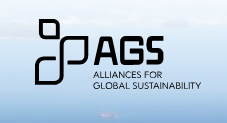As the impacts of climate change and environmental degradation become increasingly evident, the call for effective sustainability solutions is louder than ever. These solutions involve a variety of strategies and technologies aimed at minimizing our ecological footprint, enhancing the efficiency of resource use, and fostering a more sustainable lifestyle. This article delves into some of the most promising sustainability solutions currently driving change.
**1. Embracing Renewable Energy**
One of the fundamental components of a sustainable future is the shift from fossil fuels to renewable energy sources. Solar, wind, hydro, and geothermal energy represent the cornerstones of this transition. Solar panels capture sunlight to generate electricity, thereby eliminating greenhouse gas emissions associated with fossil fuels. Wind turbines convert wind into power, while hydroelectric systems utilize the flow of water to produce energy. Geothermal energy taps into the Earth's internal heat, providing a consistent and sustainable energy source. Expanding the use of these technologies is crucial for reducing carbon emissions and lessening our dependence on non-renewable energy.
**2. Enhancing Energy Efficiency**
Energy efficiency is pivotal in achieving sustainability goals. It involves utilizing less energy to accomplish the same tasks and can be realized through various methods. For example, energy-efficient appliances, such as LED lighting and Energy Star-rated devices, consume less energy and cut down on utility costs. Improvements in building design, including better insulation, advanced HVAC systems, and smart thermostats, further contribute to energy efficiency. By adopting these practices, both individuals and businesses can lower their energy consumption and contribute to a reduction in greenhouse gas emissions.
**3. Advancing Sustainable Agriculture**
Agriculture significantly impacts the environment, contributing to issues like deforestation, soil erosion, and water pollution. Sustainable agriculture seeks to mitigate these impacts while ensuring food security. Practices such as crop rotation, agroforestry, and organic farming enhance soil health and promote biodiversity. Precision agriculture, which uses technology to optimize the application of water, fertilizers, and pesticides, reduces waste and environmental damage. Embracing these methods allows for the production of food in an environmentally responsible manner, benefiting both ecosystems and human health.
**4. Improving Waste Management and Recycling**
Effective waste management and recycling are essential for reducing landfill use and conserving natural resources. Recycling programs help divert materials such as paper, plastics, and metals from landfills, allowing them to be repurposed. Composting organic waste, like food scraps and yard trimmings, can decrease methane emissions from landfills and create valuable compost for gardening. Additionally, zero-waste lifestyles and circular economies focus on reducing waste generation and promoting the reuse of materials. Implementing these practices can significantly lower environmental impact and promote resource conservation.
**5. Promoting Sustainable Transportation**
Transportation is a major source of greenhouse gas emissions and pollution. Sustainable transportation solutions aim to address these issues by reducing emissions and encouraging alternative modes of travel. Electric vehicles (EVs) offer a cleaner alternative to traditional gasoline-powered cars. Public transportation options, such as buses and trains, provide a more efficient travel method compared to personal vehicles. Cycling and walking are eco-friendly choices that reduce emissions and alleviate traffic congestion. Investing in the infrastructure for these sustainable transportation methods and encouraging their adoption can substantially cut environmental impacts.
**6. Integrating Green Building and Urban Planning**
Green building practices focus on designing and constructing environmentally friendly structures. This includes using sustainable materials, optimizing energy and water use, and incorporating eco-friendly technologies. Urban planning also plays a crucial role by promoting green spaces, efficient public transport, and walkable neighborhoods. By integrating these practices into building and urban design, we can create healthier, more sustainable living environments that benefit both people and the planet.
**7. Fostering Education and Advocacy**
Education and advocacy are vital for advancing sustainability solutions. Raising awareness about environmental issues and promoting sustainable practices can drive collective action and influence policy changes. Educational initiatives in schools, community programs, and advocacy campaigns empower individuals to make informed decisions and support sustainability efforts.
In conclusion, sustainability solutions offer a diverse range of approaches to tackle environmental challenges and foster a more sustainable future. By adopting renewable energy, enhancing energy efficiency, advancing sustainable agriculture, improving waste management, supporting sustainable transportation, and embracing green building practices, we can collectively contribute to a healthier planet. Education and advocacy further amplify these efforts, driving positive change and inspiring widespread commitment to sustainability.
for more information click here: Sustainability Solutions





Comments